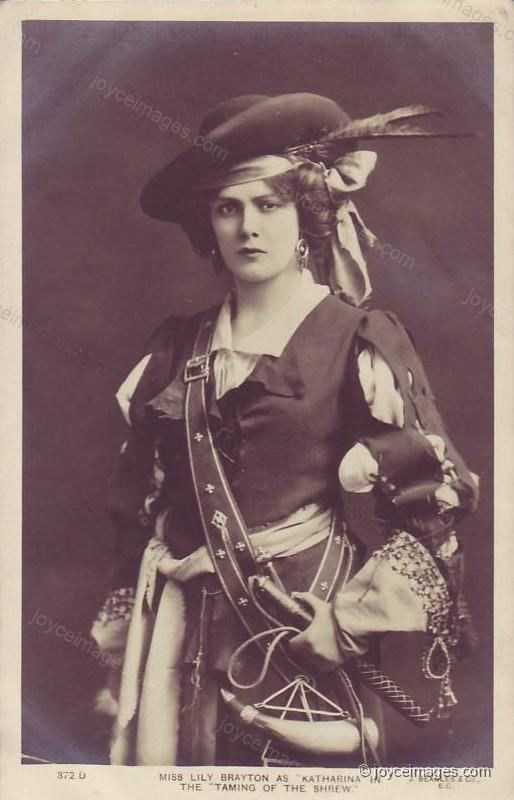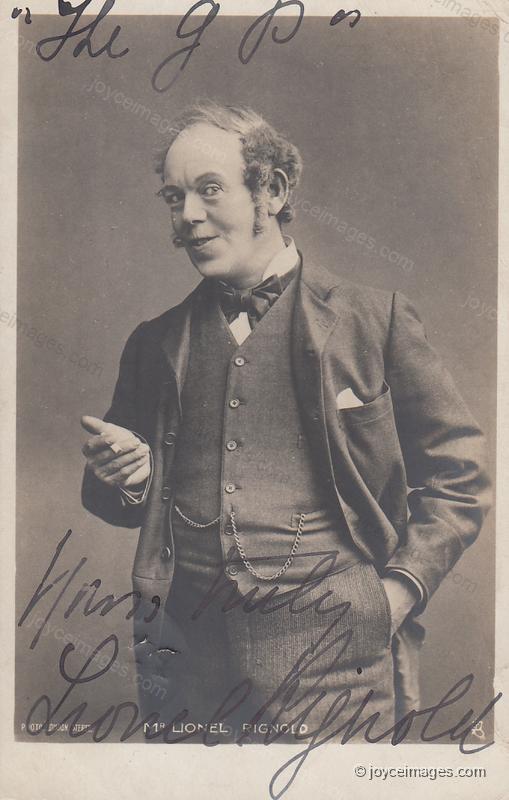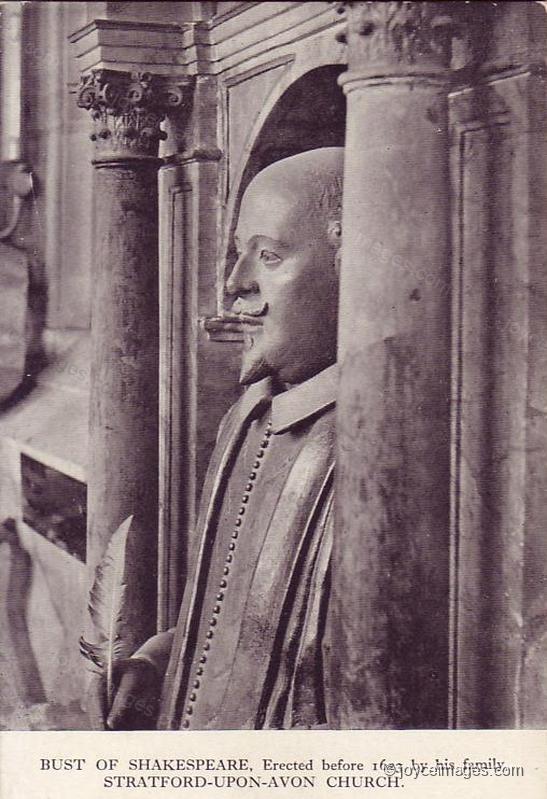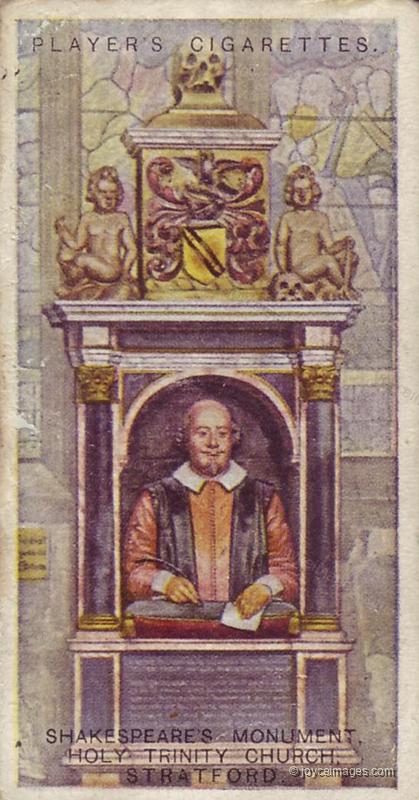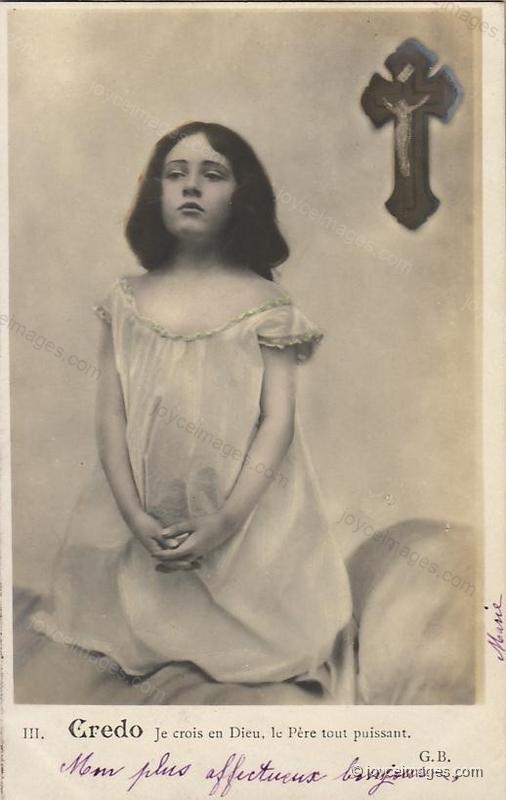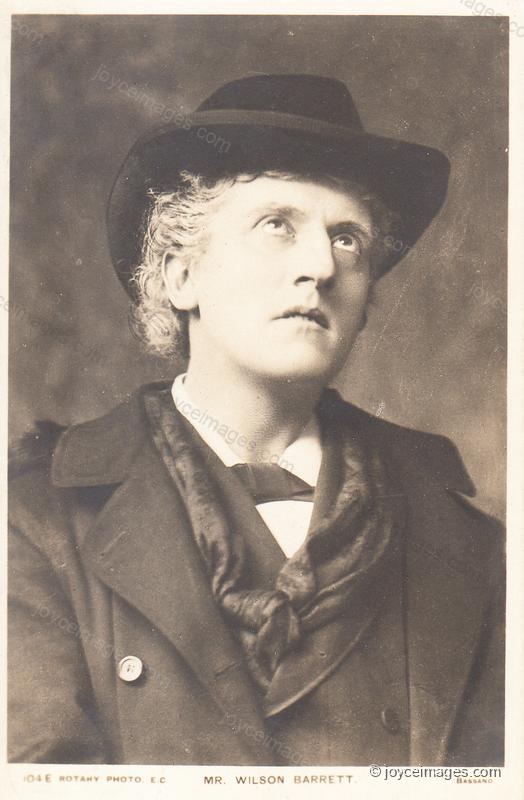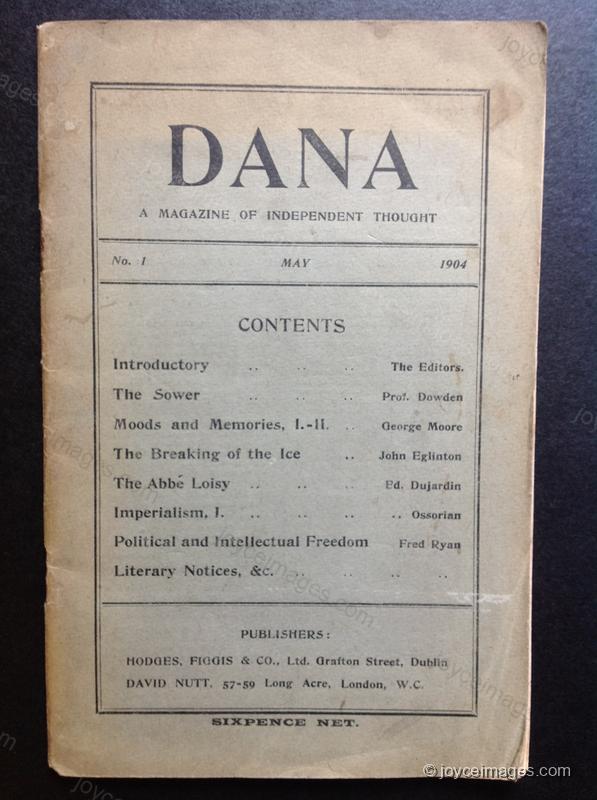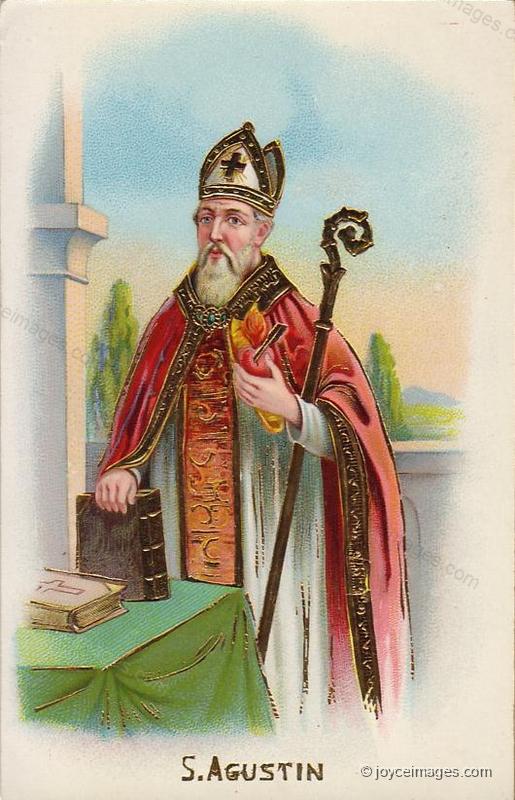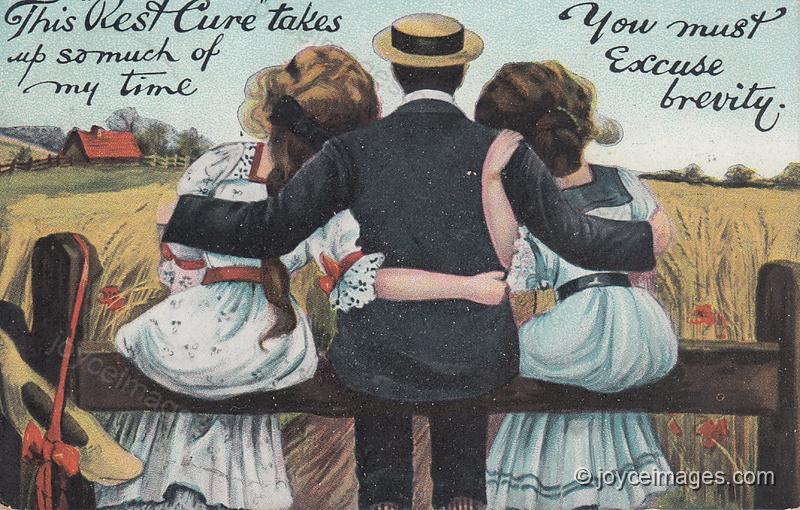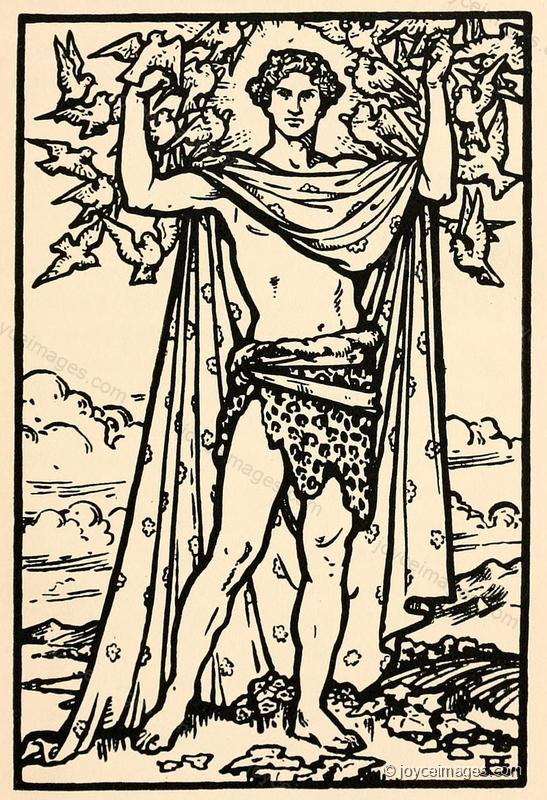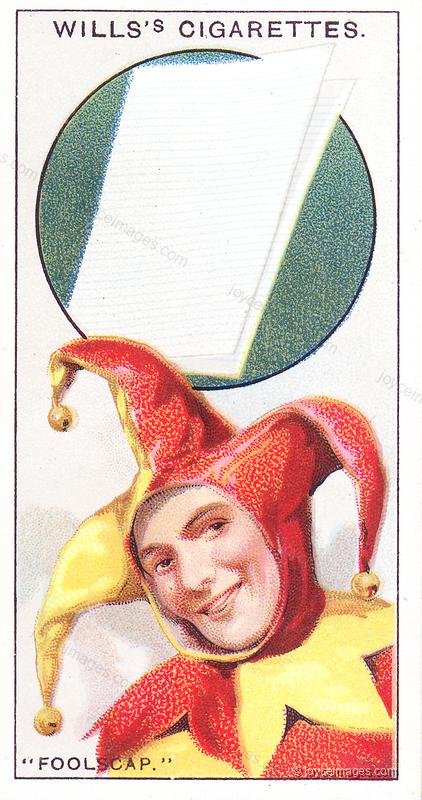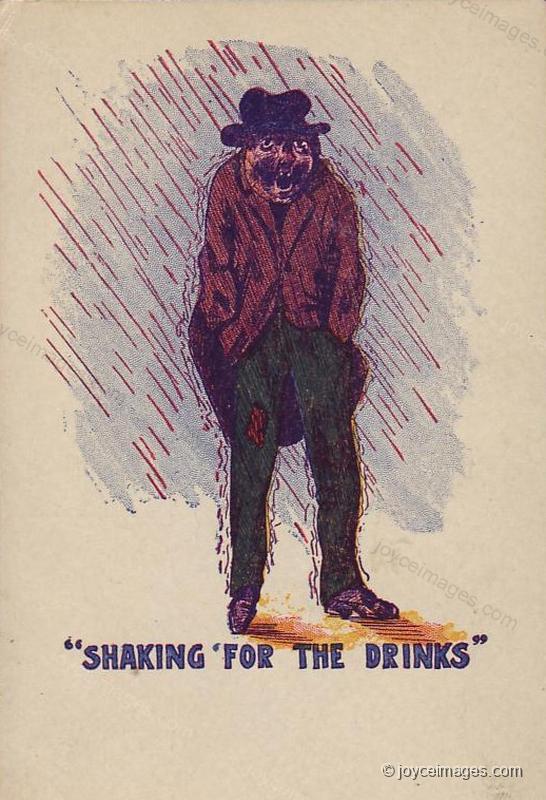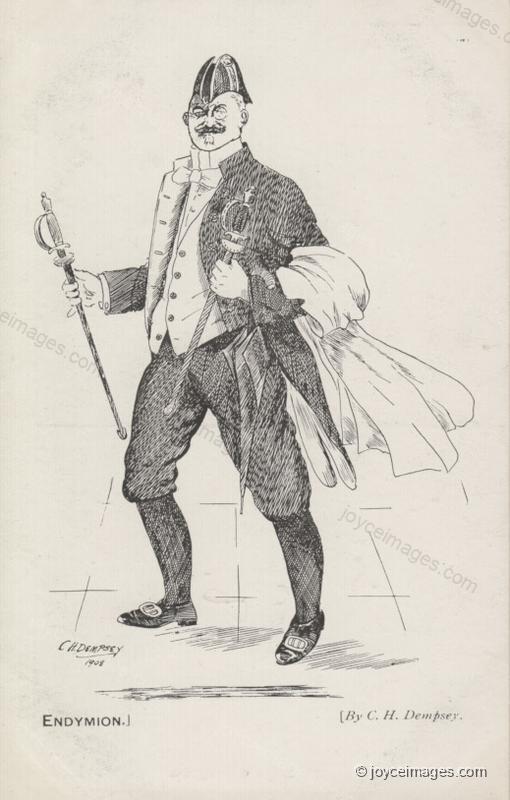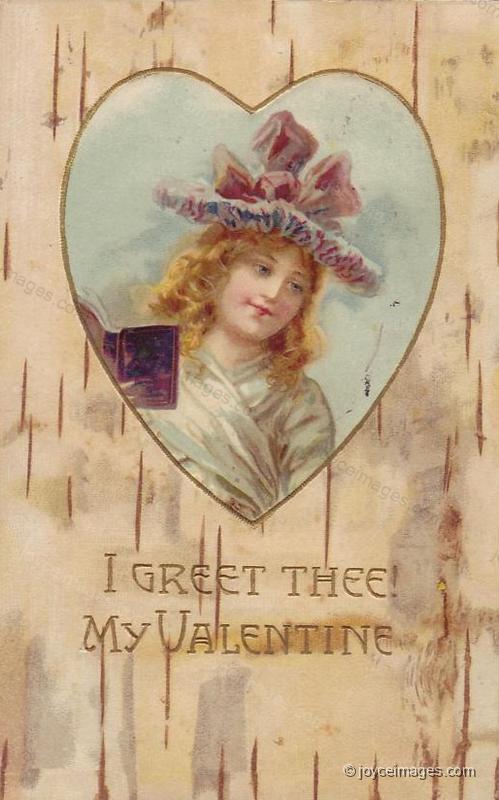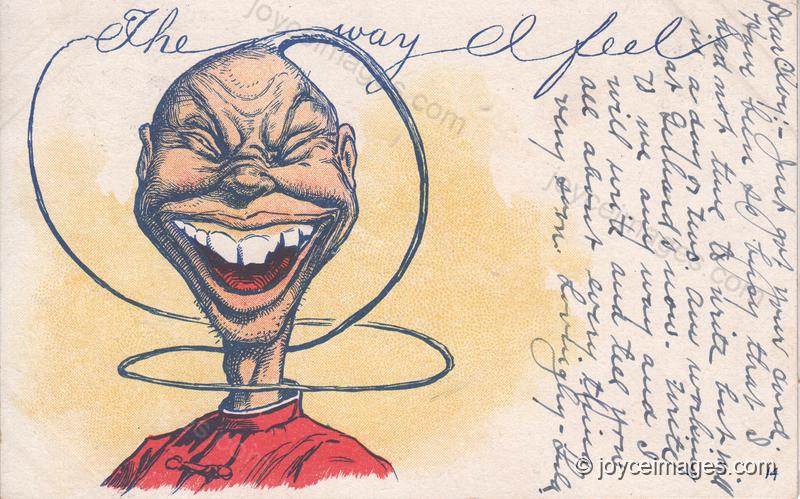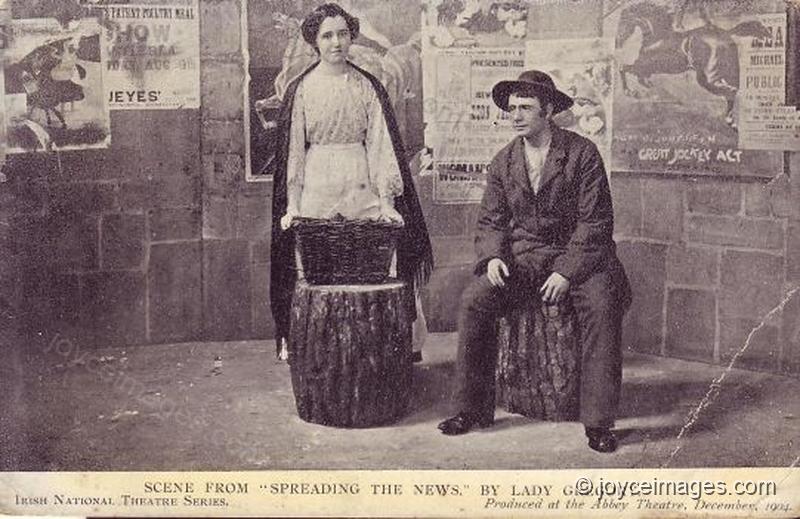"— You are a delusion, said roundly John Eglinton to Stephen. You have brought us all this way to show us a French triangle. Do you believe your own theory?
— No, Stephen said promptly.
— Are you going to write it? Mr Best asked. You ought to make it a dialogue, don't you know, like the Platonic dialogues Wilde wrote.
John Eclecticon doubly smiled.
— Well, in that case, he said, I don't see why you should expect payment for it since you don't believe it yourself. Dowden believes there is some mystery in Hamlet but will say no more." (U9.1064)
Note: this is not John Eglinton.
— No, Stephen said promptly.
— Are you going to write it? Mr Best asked. You ought to make it a dialogue, don't you know, like the Platonic dialogues Wilde wrote.
John Eclecticon doubly smiled.
— Well, in that case, he said, I don't see why you should expect payment for it since you don't believe it yourself. Dowden believes there is some mystery in Hamlet but will say no more." (U9.1064)
Note: this is not John Eglinton.
"Herr Bleibtreu, the man Piper met in Berlin, who is working up that Rutland theory, believes that the secret is hidden in the Stratford monument. He is going to visit the present duke, Piper says, and prove to him that his ancestor wrote the plays. It will come as a surprise to his grace. But he believes his theory." (U9.1073)
The monument to Shakespeare, a half-length statue set is a niche, was installed in the Holy Trinity Church between 1616 (Shakespeare's death) and 1623 (the publication of the First Folio where Leonard Digges mentions it). It is believed to have been commissioned by Shakespeare's daughter and her husband Dr John Hall. It may have been the work of Garratt Janssen of Johnson, an Anglo-Flemish tomb-maker.
The monument to Shakespeare, a half-length statue set is a niche, was installed in the Holy Trinity Church between 1616 (Shakespeare's death) and 1623 (the publication of the First Folio where Leonard Digges mentions it). It is believed to have been commissioned by Shakespeare's daughter and her husband Dr John Hall. It may have been the work of Garratt Janssen of Johnson, an Anglo-Flemish tomb-maker.
The original bust was repaired, refurbished and repainted many times, even possibly replaced, including major changes in 1749. An engraving of the monument in Sir William Dugdale's 'Antiquities of Warwickshire' (1656) shows major differences from the current monument: the cushion on which Shakespeare's arms rest was initially much bulkier, and there was no pen or paper in his hands. These changes have been used in heated debates around the question of Shakespeare's identity. 'Anti-Stratfordians' argue that the monument was altered as a part of the 'conspiracy' to fool people into believing that an illiterate commodity dealer from Stratford actually wrote the works attributed to William Shakespeare. The 'Rutland theory,' on which Herr Bleibtreu is working, specifically holds that Roger Manners, 5th Earl of Rutland, was their true author.
"help my unbelief. That is, help me to believe or help me to unbelieve? Who helps to believe? Egomen. Who to unbelieve? Other chap." (U9.1078)
"— You are the only contributor to Dana who asks for pieces of silver. Then I don't know about the next number. Fred Ryan wants space for an article on economics.
Fraidrine. Two pieces of silver he lent me. Tide you over. Economics.
— For a guinea, Stephen said, you can publish this interview." ([U9.1081])
Image used by kind permission of Tim & Christine O'Neill.
Fraidrine. Two pieces of silver he lent me. Tide you over. Economics.
— For a guinea, Stephen said, you can publish this interview." ([U9.1081])
Image used by kind permission of Tim & Christine O'Neill.
"Buck Mulligan stood up from his laughing scribbling, laughing: and then gravely said, honeying malice:
- I called upon the bard Kinch at his summer residence in upper Mecklenburgh street and found him deep in the study of the Summa contra Gentiles" (U9.1086)
- I called upon the bard Kinch at his summer residence in upper Mecklenburgh street and found him deep in the study of the Summa contra Gentiles" (U9.1086)
"in the company of two gonorrheal ladies, Fresh Nelly and Rosalie, the coalquay whore.
He broke away." (U9.1090)
He broke away." (U9.1090)
"— Come, Kinch. Come, wandering Aengus of the birds.
Come, Kinch. You have eaten all we left. Ay. I will serve you your orts and offals.
Stephen rose.
Life is many days. This will end.
— We shall see you tonight, John Eglinton said. Notre ami Moore says Malachi Mulligan must be there.
Buck Mulligan flaunted his slip and panama.
— Monsieur Moore, he said, lecturer on French letters to the youth of Ireland. I'll be there. Come, Kinch, the bards must drink. Can you walk straight?" ([U9.1093])
Come, Kinch. You have eaten all we left. Ay. I will serve you your orts and offals.
Stephen rose.
Life is many days. This will end.
— We shall see you tonight, John Eglinton said. Notre ami Moore says Malachi Mulligan must be there.
Buck Mulligan flaunted his slip and panama.
— Monsieur Moore, he said, lecturer on French letters to the youth of Ireland. I'll be there. Come, Kinch, the bards must drink. Can you walk straight?" ([U9.1093])
"Laughing, he....
Swill till eleven. Irish nights entertainment.
Lubber ....
Stephen followed a lubber...
One day in the national library we had a discussion. Shakes. After. His lub back: I followed. I gall his kibe.
Stephen, greeting, then all amort, followed a lubber jester, a wellkempt head, newbarbered, out of the vaulted cell into a shattering daylight of no thought.
What have I learned? Of them? Of me?
Walk like Haines now." (U9.1103)
Swill till eleven. Irish nights entertainment.
Lubber ....
Stephen followed a lubber...
One day in the national library we had a discussion. Shakes. After. His lub back: I followed. I gall his kibe.
Stephen, greeting, then all amort, followed a lubber jester, a wellkempt head, newbarbered, out of the vaulted cell into a shattering daylight of no thought.
What have I learned? Of them? Of me?
Walk like Haines now." (U9.1103)
"One day in the national library we had a discussion. Shakes. After. His lub back: I followed. I gall his kibe." (U9.1108)
"The constant readers' room. In the readers' book Cashel Boyle O'Connor Fitzmaurice Tisdall Farrell parafes his polysyllables. Item: was Hamlet mad? The quaker's pate godlily with a priesteen in booktalk.
- O please do, sir...I shall be most pleased
Amused Buck Mulligan mused in pleasant murmur with himself, selfnodding:
- A pleased bottom.
The turnstile." (9.1115)
- O please do, sir...I shall be most pleased
Amused Buck Mulligan mused in pleasant murmur with himself, selfnodding:
- A pleased bottom.
The turnstile." (9.1115)
"Is that...? Blueribboned hat...? Idly writing...? What...? Looked...?
The curving balustrade: smoothsliding Mincius.
Puck Mulligan, panamahelmeted, went step by step, iambing, trolling:
- John Eglinton, my jo, John,
Why won't you wed a wife?" (U9.1123)
The curving balustrade: smoothsliding Mincius.
Puck Mulligan, panamahelmeted, went step by step, iambing, trolling:
- John Eglinton, my jo, John,
Why won't you wed a wife?" (U9.1123)
"We went over to their playbox, Haines and I, the plumbers' hall.Our players are creating a new art for Europe like the Greeks or M. Maeterlinck." (U9.1129)
The Abbey Theatre (= National Theatre of Ireland), opened on December 27th 1904, in a building on Lower Abbey street known as The Mechanics' Hall. The programme, of which Mulligan and Haines had a sneak preview, was 3 one-act plays: 'On Baile's Strand' and 'Cathleen Ni Houlihan' by W.B. Yeats, and 'Spreading the News' by Lady Gregory.
The Abbey Theatre (= National Theatre of Ireland), opened on December 27th 1904, in a building on Lower Abbey street known as The Mechanics' Hall. The programme, of which Mulligan and Haines had a sneak preview, was 3 one-act plays: 'On Baile's Strand' and 'Cathleen Ni Houlihan' by W.B. Yeats, and 'Spreading the News' by Lady Gregory.
